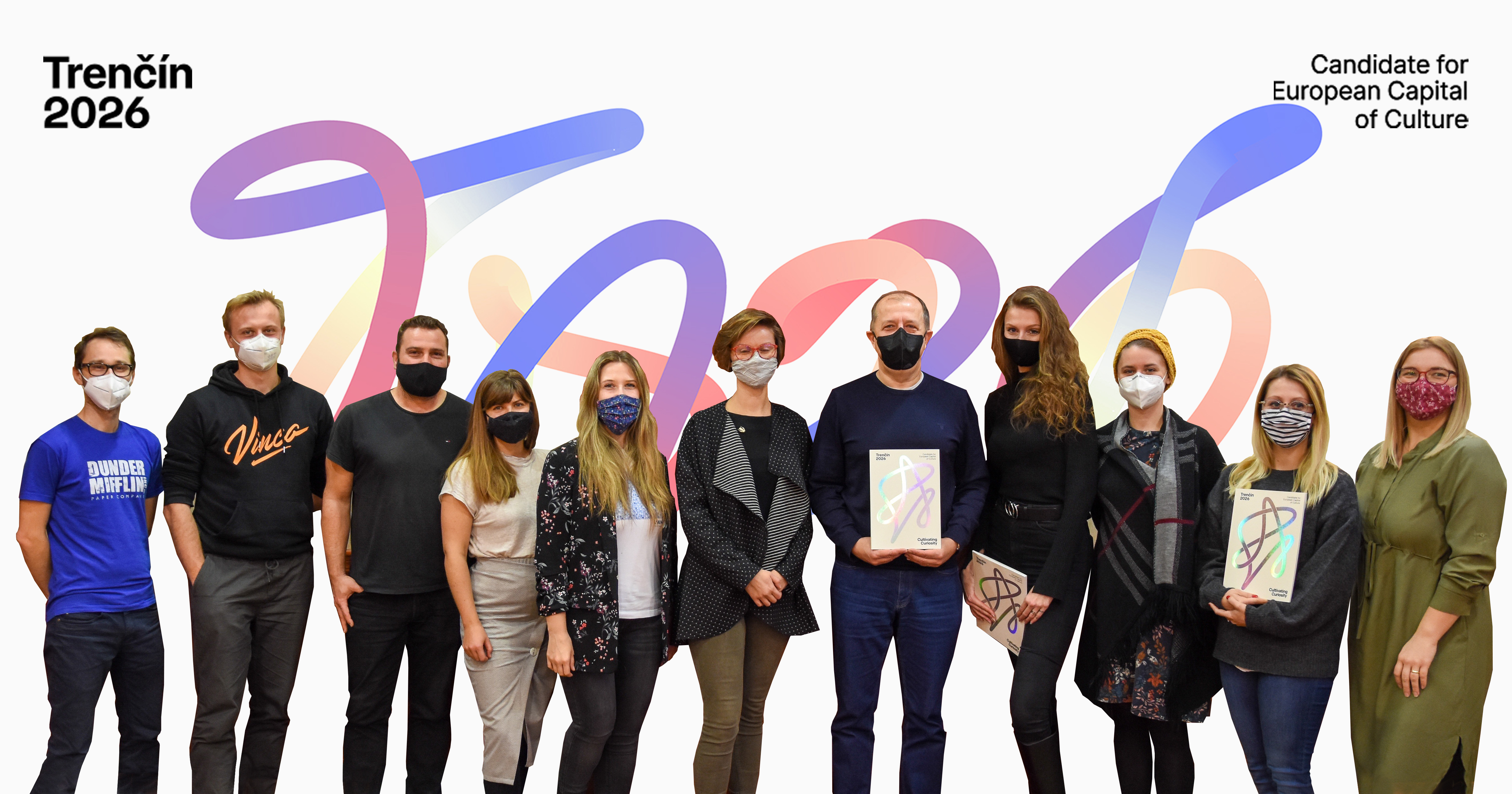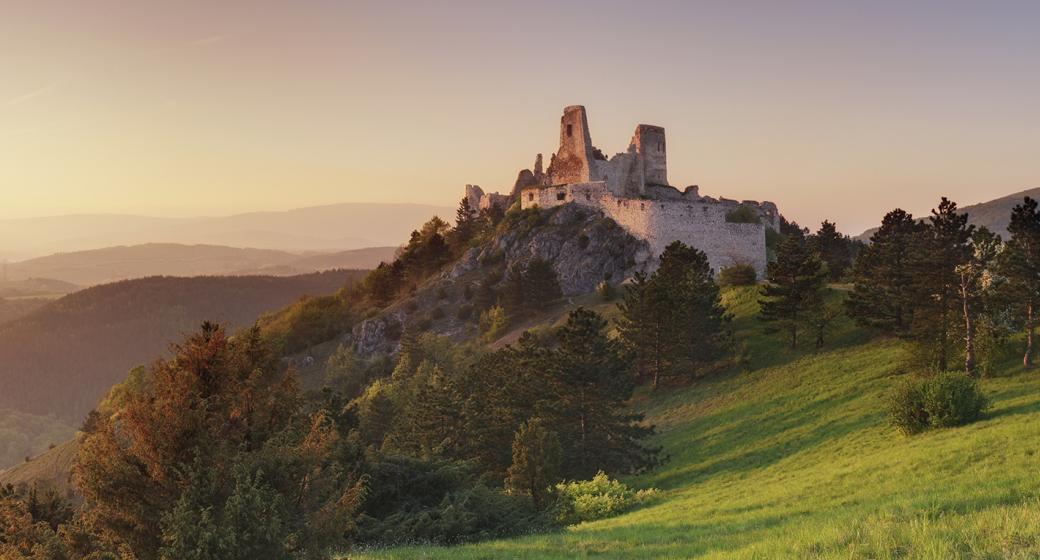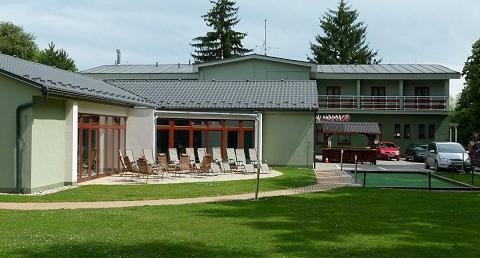


More than a year ago, the Ministry of Culture of the Slovak Republic submitted a call for participation in the European Capital of Culture (ECOC) project. This initiative was used by the mayor of Trenčín, Richard Rybníček, to convene a meeting and create the Trenčín2026 project. He has the ambition to develop such initiatives that will bring the Trenčín region and the city of Trenčín itself closer to winning, and thus to become the European Capital of Culture. By advancing to the second round, Trenčín found itself in the final together with the cities of Žilina and Nitra. It will be decided in December which city will win the title and thus a complete transformation awaits it.
The project manager of Trenčín2026, Lucia Dubačová, told us in an interview what the project is about, which would mean a win for the city and why every inhabitant of the Trenčín region should know about the initiative.
1. At the beginning, tell us what would the ECOC win mean to Trenčín?
It took our team a long time to really understand in depth what all the potential impacts this project can have not only on the city but also on the whole region, because the ECOC is a project that involves the whole region and in a country like Slovakia, we can say on the national impact.
The beauty of the project is that when it is well set up and implemented, we are talking about a comprehensive transformation of the whole city and region. So it is an urban, social or economic transformation. As a result, people are changing their minds, opening up new topics and at the same time better linking sectors (such as the private sector with the cultural and social sectors), creating links that can work in the long run, because the city should really be for everyone.
At the very beginning, we talked to more than 1,300 inhabitants of the city, who were divided into various groups - parents, children, religious groups, homeless people, ethnic minorities, entrepreneurs, etc. In them, we examined opinions and attitudes related to architecture, public space or leisure activities. They were "focus groups", we tried to get a comprehensive profile of the population and what their needs are, what they like, what they miss, how they imagine the ideal Trenčín in 10 years, and from all this the project itself arose. It is therefore not just a challenge of the working group, but of the cross-section of the population in the Trenčín Region.
The project is very complex, the impact will certainly be very wide - from the use of buildings that are not used or have greater potential through the revitalization of public space, to the cultural centers in each part of the city where renovations are planned. We look at what we have in the city and how cultural resources can be used to make it possible to live better in the city in all aspects. At the same time, however, we also address climatic and natural issues.
2. What exactly is the ECOC?
It is one of the EU's most successful transformation projects. In response to a pandemic, it is seen as one of the key tools for addressing the challenges and problems we face due to a pandemic.
The founder of the ECOC is the actress and politician Melina Mercouri. As she herself said, this project is about getting to know each other better, talking about culture and exchanging views. We have a cultural past and a cultural future. The whole of Europe should be united. Culture is one of the strongest criteria for peace.
The main idea of the ECOC format is therefore simple - each year, two cities in two countries will be given the opportunity to become the European Capital of Culture. In this context, the term culture also means the overall quality of life, ecology, a view of European values, culture and active public life. The city will be revitalized, revived by culture and thus included on the European cultural map. The program aims to strengthen Europe's identity, values and knowledge of the rich cultural heritage.
Dozens of cities have started in the last 37 years thanks to this program. They increased their urban potential, improved infrastructure and strengthened the cultural scene or communities.
3. Is this the first time Trenčín has joined the ECOC?
Trenčín joined the challenge for the first time in 2013, when Košice won, so this is the second time.
4. Trenčín2026 was created precisely for the purpose of candidacy for the ECOC. But what happens if Trenčín does not win? Will you continue to operate?
Just as the project has a long-term goal, so does our city. It is a great fortune that Trenčín has very enlightened officials in the city. Many people certainly register the Trenčín Si Ty project. It is a great urban vision, which was created in 2013. It is the best tangible manifestation of long-term planning in the city of Trenčín.
Trenčín2026 is a beautiful continuation of the Trenčín Si Ty project. He talks about what the city of Trenčín will look like and how it will work. Trenčín2026 again talks about what will happen in old and new places, who will fill them and what. It is a beautiful harmony of projects - Trenčín2026 will fill the places that Trenčín Si Ty designs. That is why it is very important that we begin to think not only about the body, but also about the soul of the city. Only this thinking, which is really long-term, is transformed into the candidacy itself.
Regardless of the win, the city is also interested in doing activities that are sustainable in the long run. Many of the things that are proposed for Trenčín2026 are already being addressed and we are thinking about how they could be done regardless of the title. There are many possibilities, this year we have applied for several grants for smaller subprojects, precisely so that we know that we are moving on and the cultural development of the city will continue no matter what happens in December. For example, from 15.5. to 15.6. citizens have the opportunity to support the project of multifunctional furniture Archipelago in the department stores COOP Jednota in Max and on ul. Janka Kráľa. Maybe to a lesser extent, but we will continue.
5. What do you objectively think about the presentations of Žilina and Nitra, which also reached the finals?
Each city is completely specific, there is no one meter or key formula to say that this is how it should be, and then the city will win. Both Žilina and Nitra are very specific. Of course, their advantage is that, unlike Trenčín, they have theaters. However, we in Trenčín take it as an advantage for us, because we have the opportunity to come up with something new and innovative. They are very strong competitors, we communicate together on a regular basis. Teams are extremely strong in both cities and know what they are doing. They do it very well, which we all enjoy each other. In this context, it may not even matter which city wins. We also communicate about how to set up cooperation not only between the three candidates, but with the cities in Slovakia in general, so that the impact of the project is truly national, not only local.
6. In your opinion, in what way does Trenčín have an advantage over the competition? What attributes could they weigh?
The more we talk to people, the more we perceive that a large number of people have a positive relationship with the city of Trenčín. Trenčín is also a mushroom of such an "underground" scene, culture began to form here even before the revolution, progressive ideas culminated here, society was activated, which is very important and interesting for any cultural ground. At the same time, we have an amazing scene of cultural organizations and individuals who are very active and ready to do more internationally, which is important.
We have great natural conditions in which we are anchored. We are one of the very few places in Europe that has a forest right in the city center, we have a river, a natural environment connected to the island, which creates great conditions for us to combine various sports activities with cultural activities. There is a lot here, and the Oda building itself is perceived as a potential contemporary cultural space, which we are discussing with the Ministry of Defense of the Slovak Republic. Also, the Synagogue building, which is currently under reconstruction, will become an interesting cultural place. The Pohoda festival is also a great advantage and attraction. So we have something to cook from here.
7. Is it possible that the public is also somehow contributing to getting Trenčín closer to winning?
Certainly yes. In the second round during the summer months, we will carry out various activities in the region. We have just profiled what makes up the region, and these are the 3 main lines - functionalist architecture, textile, footwear and glass. We will carry out trips, activities and invite the public to get involved, to find out about the project and to find out for themselves what their city, region and values are.
The most important thing is that the public is fully informed about and supports the project. People can help the most by talking about the project and showing their support. For example, cafes and shops by publishing the Trenčín2026 logo in the windows. We'll be glad, when someone comes up with an idea, an activity, an initiative on how to spread the idea of the project more among the inhabitants of the city and the region. Our goal is to talk to everyone, which is not literally possible, and that is why we need the help of everyone. This is a project that will make all of us live better in the city, but that is why everyone must put their own hand to the work.
8. When will it all be decided and what does the decision-making process look like?
It will be decided in December. In the first round, we wrote the first "bid book", ie a project proposal, for which it was necessary to create a creative presentation of the city. We made a 5-minute film, presenting the city's potential in front of an 11-member international jury, during a 60-minute round of questions and answers that were relentlessly thrown at us. We didn't even have a chance to ask if we understood the question correctly. It was really very demanding, we prepared for it for about a month.
It's nothing easy or fast. We also received the results, along with the feedback that we must follow now, which is the maximum guide we must follow. It is also publicly available on the website of the Ministry of Culture, anyone can read it. We are now in the second round, the deadline for submitting the project is November 2, 2021, by which time the entire project must be printed. The subsequent process is similar to the first round with one extra activity.
At the beginning of December, some members of the jury will come to see us, and then the presentation will follow again, which this time will last 90 minutes. The jury looks at our social networks, the web, to see if we are being talked about in the different communities in which they move. We also need to be talked about in the European Commission, so it is important that our activities are also physically visible. That is why we are doing pilot versions of some projects. They must be in the international media and personal space to be talked about.
In Trenčín 14.5.2021
Text: MT

Malebná zrúcanina viditeľná už z diaľky na vápencovo-dolomitickom kopci poskytujúca…

Oddych v prekrásnom prírodnom prostredí myjavských kopaníc. . Strávte víkend v…